The Transportation Revolution: Autonomous Cars and the Evolution of Mobility
In the 21st century, the world of transportation is on the brink of a revolution. The emergence of autonomous cars, often referred to as self-driving cars, is poised to transform the way we move from one place to another. These vehicles, equipped with advanced technologies, sensors, and artificial intelligence, promise to not only redefine mobility but also impact various aspects of our lives, from safety to ethics. In this comprehensive article, we will explore the exciting realm of autonomous cars, delving deep into the levels of autonomy, the role of artificial intelligence, the benefits and challenges they bring, key players in the autonomous technology landscape, legal regulations, environmental impacts, and their role in the broader concept of Mobility as a Service (MaaS). We’ll also discuss their influence on urban landscapes, societal and economic implications, data analytics, human-machine interfaces, public perception, connectivity in smart cities, the testing and development process, international perspectives, ethical considerations, and finally, the future of mobility.
The Rise of Autonomous Cars
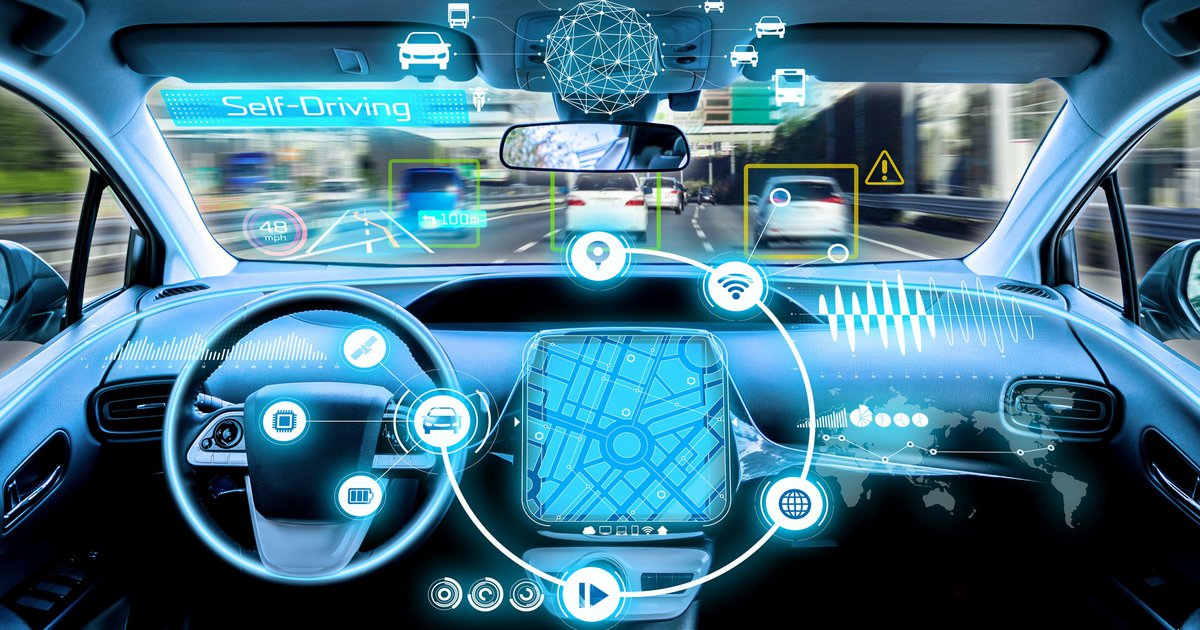
Understanding Autonomous Vehicles
Autonomous cars are a marvel of modern engineering. These vehicles are capable of navigating themselves without human intervention, thanks to a sophisticated combination of sensors, cameras, radar, and complex algorithms. They can detect their surroundings, interpret data, and make real-time decisions. The extent of their autonomy is categorized into several levels, ranging from Level 0, where there’s no automation, to Level 5, where the car can operate fully autonomously under all conditions.
Levels of Autonomy: From Driver Assistance to Full Autonomy
To comprehend autonomous cars, it’s crucial to understand these levels of autonomy:
Level 0 (No Automation): These vehicles are entirely controlled by the driver, with no automation features.
Level 1 (Driver Assistance): At this level, cars have some driver assistance features, like adaptive cruise control.
Level 2 (Partial Automation): Vehicles can handle both steering and acceleration/deceleration, but the driver must remain engaged.
Level 3 (Conditional Automation): The car can manage all aspects of driving but may require the driver to take over when requested.
Level 4 (High Automation): These cars can operate autonomously but may have limitations in certain conditions.
Level 5 (Full Automation): Vehicles at this level can navigate all situations without human intervention.
The Role of Artificial Intelligence in Self-Driving Cars
Artificial intelligence (AI) is at the core of autonomous vehicles. Advanced AI systems process data from various sensors, allowing the car to make real-time decisions and adapt to its environment. Machine learning and neural networks, subsets of AI, play a vital role in autonomous systems. They enable the vehicle to recognize patterns, adapt to changing conditions, and continuously improve its performance. This constant learning process is one of the reasons why autonomous cars are poised to revolutionize the world of transportation.
Benefits and Challenges
Advantages of Autonomous Cars
The adoption of autonomous cars holds the promise of numerous benefits, some of which include:
Safety Improvements and Reduced Accidents: One of the most significant advantages is the potential for a substantial reduction in traffic accidents. Human error is a leading cause of crashes, and autonomous cars’ precision and constant vigilance could save countless lives.
Traffic Congestion and Fuel Efficiency: Autonomous cars can communicate with each other and with traffic infrastructure, leading to reduced traffic congestion and smoother traffic flow. This not only saves time for commuters but also reduces fuel consumption and greenhouse gas emissions.
Challenges and Concerns
While the potential benefits of autonomous cars are compelling, there are significant challenges to address. Some of the key concerns revolve around ethical dilemmas and cybersecurity risks:
Ethical Dilemmas: The Trolley Problem
One of the most thought-provoking challenges in autonomous vehicle development is the ethical dilemma known as the “trolley problem.” This scenario raises questions about how autonomous cars should make decisions in no-win situations. For example, should the car prioritize the safety of its occupants or pedestrians in an emergency situation? Resolving these moral dilemmas in programming is a complex task that requires careful consideration.
Cybersecurity Risks and Potential Hacking
As autonomous cars rely heavily on software and connectivity, they are susceptible to cyberattacks. Ensuring the security of these vehicles and the data they collect is of utmost importance. The potential for hacking poses a significant threat, and robust cybersecurity measures are essential to safeguard the integrity of these systems.
Key Players in Autonomous Technology
Leading Companies in the Self-Driving Car Industry
Several companies are at the forefront of autonomous technology, investing heavily in research and development to bring self-driving cars to the masses. Let’s take a closer look at some of the key players:
Tesla: The Pioneer of Autonomous Features
Under the leadership of Elon Musk, Tesla has been a trailblazer in introducing advanced driver-assistance features through its Autopilot system. While not fully autonomous, Tesla’s approach to incremental autonomy has garnered significant attention and controversy. Musk envisions a future where Tesla vehicles achieve full self-driving capabilities.
Waymo: Google’s Self-Driving Subsidiary
Waymo, a subsidiary of Alphabet Inc. (Google’s parent company), has been a pioneer in developing fully autonomous vehicles. Their focus on creating a safe and reliable self-driving technology has set them apart in the autonomous car race. Waymo’s vehicles have logged millions of real-world miles and continue to lead the way in autonomous technology development.
Uber and Lyft’s Efforts in Autonomous Ride-Sharing
Ride-sharing giants Uber and Lyft are also actively involved in the race to autonomy. Both companies aim to integrate self-driving cars into their fleets, potentially revolutionizing the ride-sharing industry. The idea of summoning a self-driving car for a ride may soon become a reality, changing the way we think about transportation services.
Traditional Automakers Embracing Autonomous Technology
Traditional automakers like Ford, General Motors, and Volkswagen are not lagging behind in the race towards autonomous technology. They are actively working on autonomous systems to stay competitive in the evolving market. These established companies bring their wealth of experience and resources to the autonomous car landscape, adding depth to the competition.
Legislation and Regulation
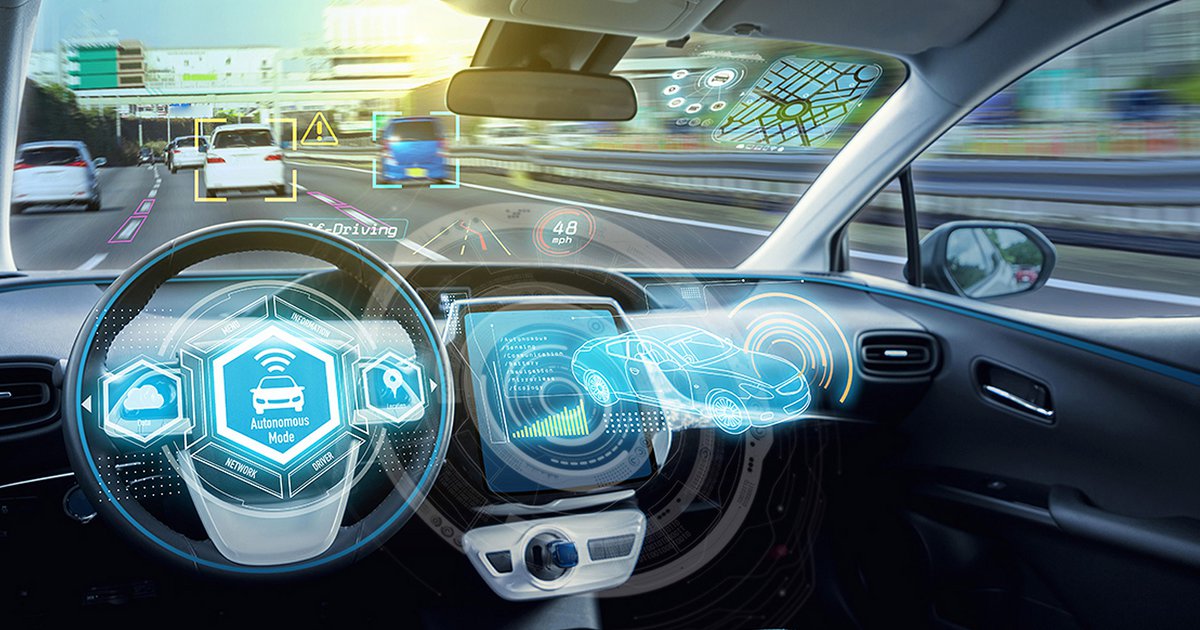
The Legal Framework for Autonomous Vehicles
The deployment of autonomous cars necessitates a comprehensive legal framework to ensure safety, accountability, and standardization. Governments worldwide are in the process of establishing rules and regulations for these vehicles. In the United States, each state has started implementing its own regulations, creating a patchwork of rules that manufacturers must navigate.
National and State Regulations in the United States
In the United States, the regulatory landscape for autonomous vehicles is complex and evolving. The National Highway Traffic Safety Administration (NHTSA) is responsible for setting federal guidelines, while individual states have the authority to enact their own laws related to autonomous vehicles. This variation in regulations across states presents a challenge for manufacturers looking to deploy self-driving cars on a national scale.
International Efforts to Standardize Autonomous Vehicle Laws
Internationally, there are efforts to harmonize regulations for autonomous vehicles. Organizations like the United Nations Economic Commission for Europe (UNECE) are working to create a global framework that sets safety standards and ensures a consistent approach to autonomous vehicle deployment. The aim is to facilitate cross-border mobility and promote the safe integration of autonomous cars into different regions.
Liability Issues and Insurance in a Self-Driving World
Determining liability in the event of an accident involving an autonomous vehicle is a complex issue. Who is responsible: the manufacturer, the software developer, or the car owner? Insurance models will also need to adapt to the changing landscape of mobility. As the technology evolves, it will be necessary to redefine liability and insurance structures to ensure that victims of accidents involving autonomous cars are fairly compensated.
Autonomous Cars and the Environment
Environmental Impacts of Autonomous Cars
The adoption of autonomous cars could have a significant positive impact on the environment. Some of the environmental benefits associated with self-driving cars include:
Reduced Emissions and the Shift to Electric Vehicles
With the potential for more efficient driving patterns and the increasing use of electric powertrains, autonomous cars could help mitigate air pollution and combat climate change. The transition to electric vehicles further reduces greenhouse gas emissions, contributing to a more sustainable future.
Smart Infrastructure and Sustainability
To fully realize the environmental benefits of autonomous cars, smart infrastructure is essential. This infrastructure includes intelligent traffic management systems, dedicated lanes for autonomous vehicles, and charging stations for electric cars. Sustainable development is a key component of creating a transportation ecosystem that minimizes environmental impact.
Mobility as a Service (MaaS)
The Concept of Mobility as a Service
Mobility as a Service (MaaS) is an innovative approach to transportation that envisions a seamless, on-demand mobility experience. In a MaaS ecosystem, various transportation modes, such as public transit, ride-sharing, and autonomous cars, are integrated into a single service accessible through a digital platform. This concept aims to make transportation more convenient, efficient, and environmentally friendly.
How Autonomous Cars Are Integral to MaaS
Autonomous cars are a fundamental component of MaaS. They provide the flexibility and convenience needed to create a truly interconnected and efficient transportation system. Users can seamlessly transition between different modes of transportation, from autonomous ride-sharing to public transit, with the ease of a smartphone app.
Ride-Sharing and On-Demand Transportation Services
MaaS relies heavily on ride-sharing and on-demand transportation services. Autonomous vehicles will play a pivotal role in making these services more accessible and affordable. Passengers can summon a self-driving car when needed, reducing the need for private vehicle ownership.
The Potential for Reduced Car Ownership and Urban Planning Implications
As MaaS becomes more prevalent, the need for personal vehicle ownership may decline. This shift has significant implications for urban planning. Cities may need fewer parking spaces, and urban landscapes can be redesigned to prioritize green spaces and public amenities over parking lots. This shift in urban planning has the potential to reshape our cities and improve the quality of urban life.
Urban Mobility Transformation
How Autonomous Cars Are Reshaping Urban Landscapes
The introduction of autonomous cars is set to have a profound impact on urban areas. As self-driving technology becomes more prevalent, it will reshape the way cities are designed and how people move within them.
Reduced Need for Parking Space
One of the most immediate impacts of autonomous cars in urban areas will be a reduced need for parking space. With the ability to drop passengers off and continue to another location or parking area, autonomous vehicles can significantly decrease the demand for parking lots and garages. This change in land use could transform urban landscapes, making space available for parks, housing, or businesses.
Changes in Public Transportation and City Design
Autonomous cars may complement or even replace traditional public transportation systems in some areas. For instance, autonomous shuttles could provide efficient first- and last-mile connections to existing public transit systems. This could lead to changes in how cities plan and invest in transit infrastructure, with a shift toward more flexible, demand-driven services.
The Promise of Reduced Congestion and Smoother Traffic Flow
One of the most anticipated benefits of autonomous cars is the potential for reduced traffic congestion and smoother traffic flow. Autonomous vehicles can communicate with each other and with traffic management systems, allowing them to coordinate movements and avoid congestion. This holds the promise of shorter commutes, less time wasted in traffic, and reduced stress for urban dwellers.
Societal and Economic Implications
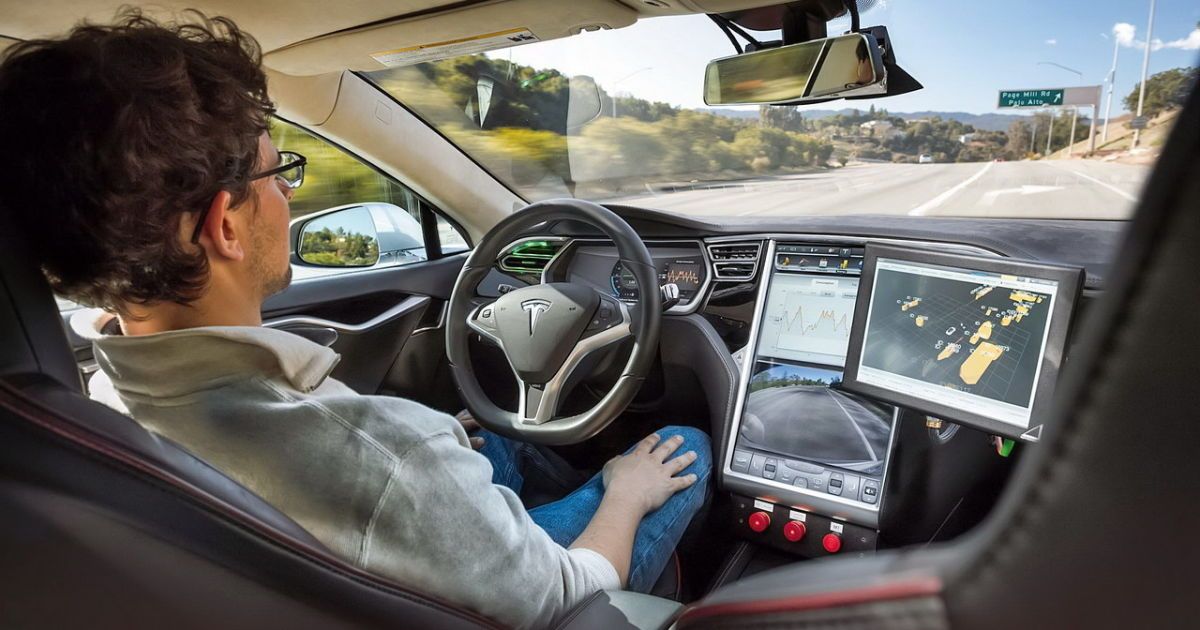
Job Displacement and Workforce Changes
The widespread adoption of autonomous vehicles may lead to workforce changes, particularly in the transportation sector. As autonomous technology matures, the need for human drivers may diminish, potentially resulting in job displacement. It’s essential to address the potential consequences and develop strategies to support affected workers.
Economic Opportunities in the Autonomous Vehicle Industry
The autonomous vehicle industry is not solely about self-driving cars. It encompasses technology development, maintenance, data management, and more, offering a plethora of economic opportunities. The growth of this industry creates jobs in research and development, manufacturing, maintenance, and data analysis. Furthermore, autonomous cars have the potential to reduce transportation costs for businesses, contributing to economic efficiency.
Enhanced Accessibility for the Elderly and Disabled
Autonomous cars have the potential to enhance the mobility of elderly and disabled individuals. The ability to summon a self-driving car can provide newfound independence, enabling those who may have difficulty driving or using public transit to access transportation services more easily. This increased accessibility can improve the quality of life for a significant portion of the population.
Autonomous Cars and Data
The Role of Data in Self-Driving Technology
Data is the lifeblood of autonomous technology. Autonomous vehicles generate vast amounts of data while navigating the world. This data is essential for various aspects of their operation, including decision-making, mapping, and performance optimization.
Data Privacy Concerns and the Use of Personal Information
The collection and use of data from autonomous cars raise concerns about data privacy and security. Users and the general public may worry about their personal information being collected and used for various purposes. Striking the right balance between innovation and privacy is crucial, and regulations and policies are being developed to address these concerns.
Big Data Analytics for Traffic Optimization
The immense volume of data generated by autonomous vehicles can be harnessed for the benefit of society. Big data analytics can be used to optimize traffic patterns, reduce congestion, and improve transportation efficiency. By analyzing data from various sources, including autonomous cars, traffic management systems can make real-time adjustments to improve the flow of traffic, ultimately benefiting both individual travelers and cities as a whole.
The Human-Machine Interface
Designing User-Friendly Autonomous Vehicle Interfaces
Creating intuitive and user-friendly interfaces for autonomous vehicles is vital to ensure that passengers can comfortably and safely interact with the technology. The design of these interfaces plays a crucial role in shaping the user experience.
User Experience (UX) in Self-Driving Cars
User experience (UX) design in autonomous vehicles goes beyond visual interfaces. It encompasses the entire interaction between passengers and the vehicle, including the way information is presented, the ease of interaction, and the overall comfort of the ride. A positive and seamless user experience will instill trust in passengers and encourage the adoption of autonomous cars.
Transitioning From Driver to Passenger: Coping With the Autonomy Shift
As autonomous technology matures, individuals will need to transition from being drivers to becoming passengers in self-driving cars. This shift has profound implications for individuals and society as a whole. Passengers will need to adapt to new roles, such as being able to trust the technology and enjoy the ride without needing to take control. Coping with this transition is a multifaceted challenge that requires not only technological advancements but also educational and societal support.
Public Perception and Adoption
How the Public Perceives Autonomous Cars
Public perception of autonomous vehicles is a critical factor in their adoption and integration into our daily lives. Understanding how people perceive self-driving cars is essential for addressing concerns, building trust, and promoting wider adoption.
Psychological Barriers and Trust in Self-Driving Technology
Psychological barriers to accepting autonomous technology exist. People may have reservations about entrusting their safety to a machine. Building trust is a crucial step in overcoming these barriers. This trust can be fostered through transparent communication about the technology’s capabilities and limitations, as well as providing opportunities for individuals to experience self-driving cars firsthand.
Factors Influencing the Adoption Rate of Autonomous Cars
Several factors influence the adoption rate of autonomous cars, including:
Cost: The affordability of autonomous vehicles, including any subscription or ride-sharing services, plays a significant role in their adoption. As technology matures and economies of scale come into play, costs may decrease, making autonomous transportation more accessible.
Regulatory Support: Supportive and clear regulations are essential for the safe deployment of autonomous vehicles. The extent to which governments and authorities facilitate autonomous transportation will influence its adoption rate.
Cultural Acceptance: Cultural factors, including attitudes towards technology and traditional driving, can vary widely between regions and societies. Understanding and addressing these cultural differences is vital for promoting adoption.
Technological Advancements: As autonomous technology improves and demonstrates its safety and reliability, more people may be willing to embrace self-driving cars. Ongoing technological advancements will play a significant role in winning public confidence.
Autonomous Cars and Connectivity
The Integration of Autonomous Cars into Smart Cities
Autonomous cars are set to become a cornerstone of smart cities, contributing to more efficient and sustainable urban environments. The concept of smart cities envisions using technology and data to improve city services, infrastructure, and quality of life.
5G Technology and Vehicle-to-Everything (V2X) Communication
The seamless operation of autonomous vehicles within smart cities relies on advanced connectivity. 5G technology is expected to provide the high-speed, low-latency connectivity needed for autonomous cars to communicate with each other and with city infrastructure. Vehicle-to-everything (V2X) communication enables cars to interact with traffic lights, signs, and other vehicles in real-time, enhancing safety and efficiency.
Improving Safety Through Vehicle-to-Vehicle (V2V) Communication
Vehicle-to-vehicle (V2V) communication enhances safety on the road by allowing vehicles to exchange real-time information about their positions, speed, and intentions. This real-time data sharing can help prevent accidents by enabling cars to react to potential hazards more quickly than human drivers. The deployment of V2V communication is a crucial step towards safer and more efficient transportation systems.
Testing and Development
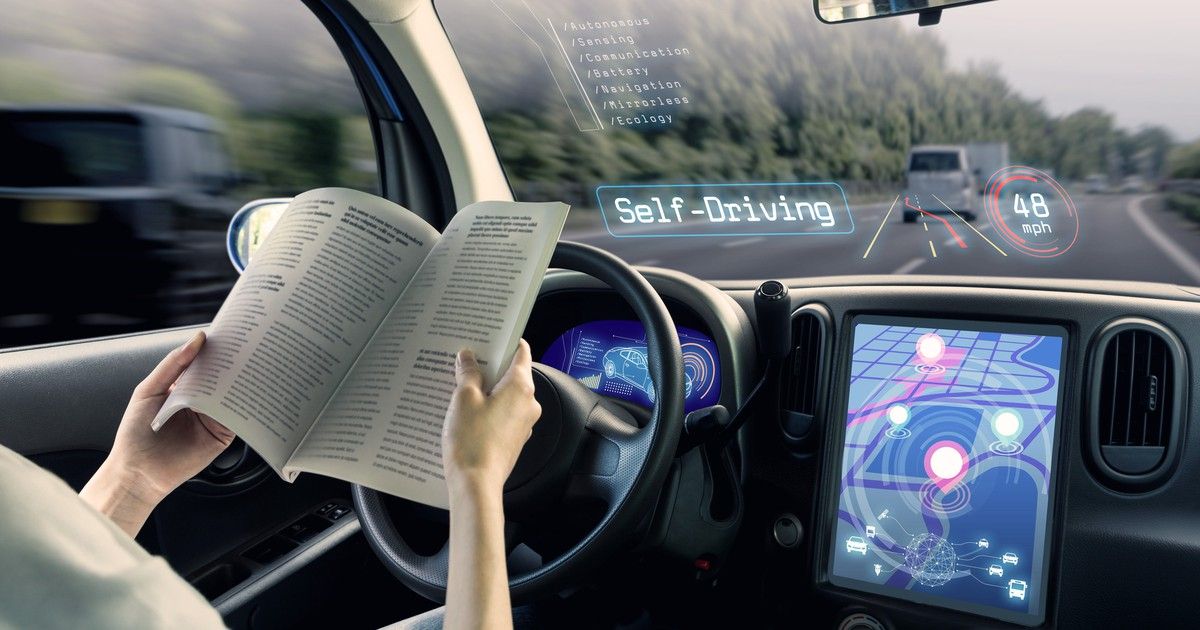
Real-World Testing and Simulation
The development of autonomous technology involves extensive real-world testing and simulation. These are critical processes to refine the technology, ensure safety, and evaluate performance in various scenarios. Companies and researchers engage in rigorous testing to advance the capabilities of autonomous cars.
Challenges in Testing and Ensuring Safety
Testing autonomous vehicles is not without challenges. One of the significant challenges is addressing edge cases and extreme conditions. These include scenarios that occur rarely but are critical to ensuring the safety of self-driving cars. Testing in diverse weather conditions, challenging road layouts, and complex traffic situations is essential to validate the technology’s performance.
The Race to Achieve Level 5 Autonomy
There’s a competitive race in the autonomous vehicle industry to achieve Level 5 autonomy. At Level 5, vehicles can operate fully autonomously under any condition. This level of autonomy holds immense promise for the future of mobility, as it enables self-driving cars to navigate all situations without human intervention. Achieving Level 5 autonomy is a coveted milestone that many companies are striving to reach.
International Perspectives on Autonomous Cars
The State of Autonomous Development in Europe, Asia, and Other Regions
Autonomous development is not limited to North America. Europe, Asia, and other regions also have a significant stake in the autonomous car landscape. Each region has its unique perspectives, challenges, and approaches to self-driving technology.
Europe: European countries are making strides in autonomous development, with companies and research institutions actively working on self-driving technologies. European regulations and standards are being developed to ensure the safety and compatibility of autonomous vehicles on European roads.
Asia: Countries in Asia, including China and Japan, are investing heavily in autonomous technology. China, in particular, is positioning itself as a leader in the self-driving car industry, with companies like Baidu making substantial advancements in this field.
Other Regions: Autonomous development is not limited to Europe and Asia. Various countries and regions across the world are also exploring self-driving technology. Each region’s unique circumstances and challenges shape the pace and approach to autonomous development.
Cultural Differences and Challenges in Global Adoption
Cultural differences can significantly influence the pace and nature of autonomous vehicle adoption. Attitudes towards technology, driving habits, and even road infrastructure vary from one region to another. Understanding these cultural differences is essential for adapting autonomous technology to local contexts and ensuring successful integration into diverse societies.
Cross-Border Regulation and Interoperability
As autonomous cars cross international borders, regulatory challenges and the need for interoperability between systems become more apparent. Coordinating regulations and standards on a global scale is essential for ensuring a seamless experience for travelers who rely on self-driving cars for cross-border journeys. International cooperation is vital to address these challenges.
Ethical and Philosophical Questions
The Role of Philosophy in Autonomous Vehicle Programming
Ethical and philosophical considerations play a significant role in the development of decision-making algorithms for autonomous vehicles. These algorithms must be programmed to make choices that align with societal values and ethical principles, prioritizing safety and the well-being of individuals.
Tackling Ethical Dilemmas and Decision-Making Algorithms
Developers of autonomous technology face complex ethical dilemmas when programming decision-making algorithms. These dilemmas require careful consideration and an understanding of societal norms and expectations. Striking the right balance between safety and ethical judgment is a significant challenge.
Balancing Safety and Moral Judgments
One of the most notable ethical challenges is balancing safety and moral judgments in self-driving cars. Algorithms must be designed to prioritize the safety of passengers and pedestrians while adhering to moral principles. This balance between safety and morality is an ongoing ethical debate and a topic of research and development.
The Future of Mobility
Anticipating the Next Decade in Autonomous Mobility
The future of autonomous mobility promises significant advancements in the coming decade. As self-driving technology matures, we can anticipate the widespread adoption of self-driving cars and the evolution of transportation systems.
How Self-Driving Cars Will Redefine Transportation and Urban Living
Self-driving cars will redefine the way we move and live in cities. They have the potential to influence everything from daily commutes and parking habits to urban planning and public spaces. The convenience and efficiency of autonomous cars will shape urban living and mobility.
Possibilities for Interconnected Mobility Ecosystems
The future of mobility envisions interconnected ecosystems where autonomous vehicles, public transportation, and personal mobility services coexist seamlessly. These interconnected systems will provide individuals with multiple transportation options, making it easy to choose the most convenient and sustainable mode of travel for any given situation.
Conclusion
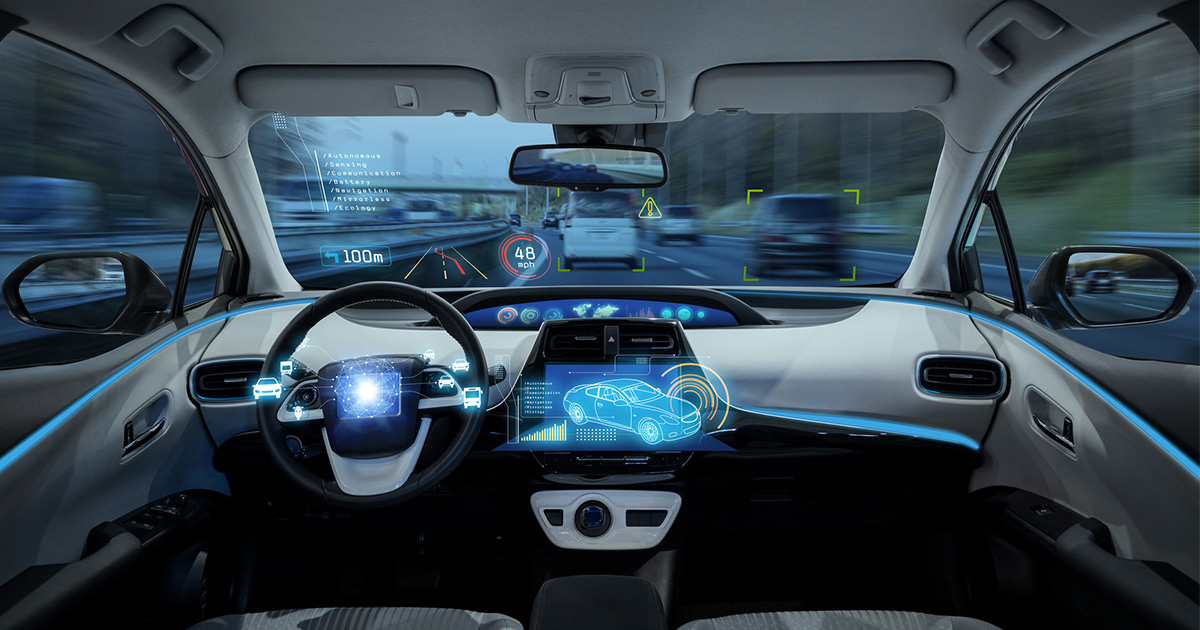
Summing Up the Autonomous Car Revolution
The emergence of autonomous cars represents a significant turning point in the history of transportation. These vehicles are not merely a mode of getting from one place to another; they symbolize a broader transformation in mobility, with the potential to enhance safety, reduce emissions, and improve urban living.
The Ongoing Evolution of Mobility in the 21st Century
As we continue to witness the evolution of mobility, it is clear that the journey has only just begun. The integration of autonomous cars into our lives and cities will undoubtedly shape the future of transportation in the 21st century. The challenges and opportunities presented by self-driving technology are immense, and as technology advances and society adapts, the transportation revolution will continue to redefine our relationship with mobility.
FAQ
How do autonomous cars work, and what makes them different from traditional vehicles?
Autonomous cars use a combination of sensors, cameras, radar, and artificial intelligence to navigate without human intervention. They can detect their surroundings, interpret data, and make real-time decisions, which sets them apart from traditional vehicles that rely on human drivers.
What are the different levels of autonomy in autonomous vehicles, and what do they mean for the driver?
Levels of autonomy range from Level 0 (no automation) to Level 5 (full automation). As you progress through these levels, the vehicle takes on more driving tasks, ultimately reaching Level 5, where the car can operate fully autonomously under any condition.
How does artificial intelligence contribute to the functionality of self-driving cars, and what role do machine learning and neural networks play?
Artificial intelligence is at the core of autonomous vehicles, processing data from sensors and making real-time decisions. Machine learning and neural networks are subsets of AI that enable autonomous cars to recognize patterns, adapt to changing conditions, and continuously improve their performance.
What are the potential benefits of autonomous cars, and how can they enhance safety and reduce traffic congestion?
Autonomous cars have the potential to significantly enhance safety by reducing accidents caused by human error. They can also alleviate traffic congestion through communication and coordination, leading to smoother traffic flow and improved fuel efficiency.
What are the ethical dilemmas related to autonomous vehicles, and how are they addressed in their programming?
Autonomous vehicles face ethical dilemmas, such as the “trolley problem,” which involves making decisions in life-or-death situations. Developers grapple with these challenges by creating algorithms that prioritize safety and align with societal values.
What cybersecurity risks do autonomous cars face, and how can they be protected from potential hacking?
Autonomous cars are susceptible to cyberattacks due to their reliance on software and connectivity. Protecting them from hacking requires robust cybersecurity measures, encryption, and secure data handling practices.
Who are the leading companies in the autonomous technology landscape, and how are they shaping the industry?
Companies like Tesla, Waymo, Uber, and traditional automakers are at the forefront of autonomous technology development. Each company is advancing self-driving capabilities and contributing to the industry’s growth.
What legal regulations exist for autonomous vehicles, and how do they vary from state to state in the United States?
Autonomous vehicles are subject to evolving legal regulations. In the U.S., federal and state regulations coexist, with individual states creating their own rules for autonomous cars. This patchwork of regulations poses challenges for manufacturers.
How can autonomous cars contribute to reducing emissions and promoting sustainability?
The adoption of autonomous cars can reduce emissions by optimizing driving patterns and transitioning to electric powertrains. Additionally, smart infrastructure and sustainable development play a crucial role in promoting environmental sustainability.
What is the concept of Mobility as a Service (MaaS), and how do autonomous cars fit into this innovative approach to transportation?
Mobility as a Service (MaaS) envisions a seamless, on-demand mobility experience, integrating various transportation modes. Autonomous cars play a pivotal role in MaaS, offering flexible, convenient transportation options and reducing the need for personal vehicle ownership.
In our exploration of the transportation revolution driven by autonomous cars, it’s vital to understand the various levels of autonomy, from Level 0 to Level 5. If you’re interested in diving deeper into the specifics of these autonomy levels, our previous post on “Renewable Energy: Challenges and Progress in the Pursuit of Sustainability” offers a comprehensive breakdown. Understanding these levels is crucial for grasping the capabilities and limitations of self-driving cars.
For a broader perspective on the impact of autonomous cars on the environment and sustainability, we recommend checking out Medium. This informative piece discusses the potential reduction in emissions, the shift to electric vehicles, and the role of smart infrastructure in creating a more sustainable transportation ecosystem. It’s an excellent resource for those interested in the environmental aspects of autonomous mobility.




Uma resposta